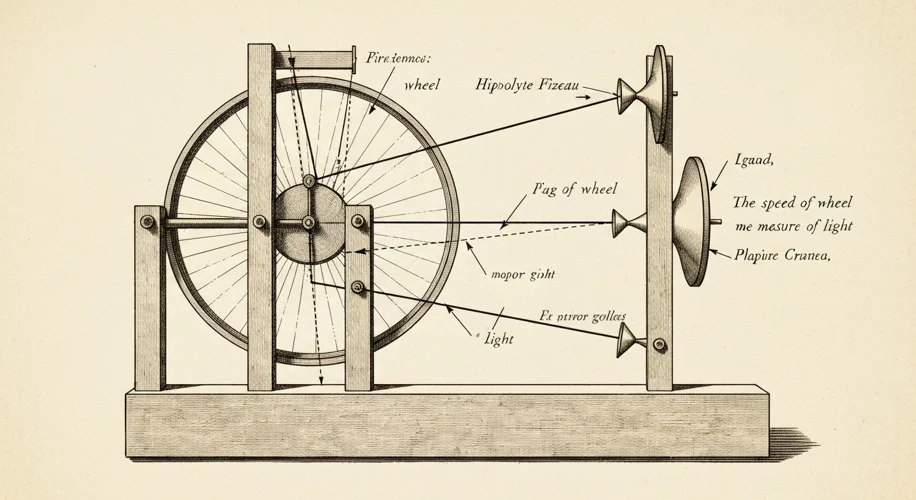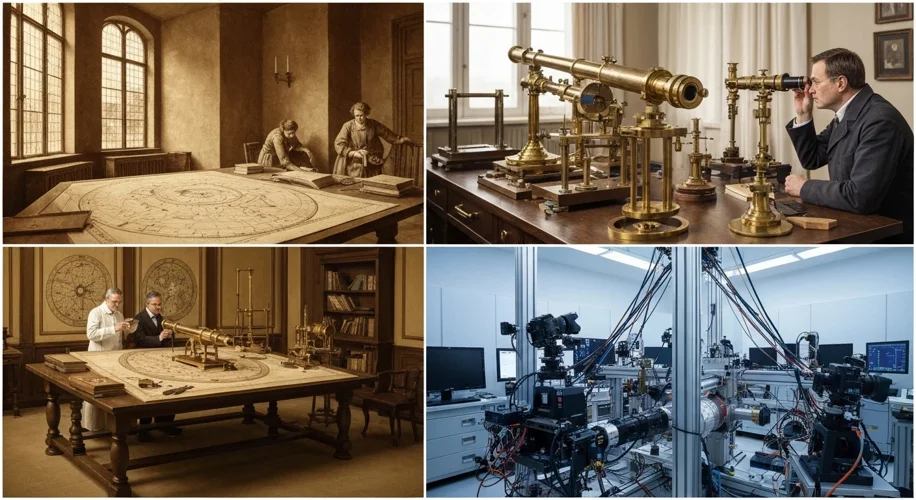Imagine a world where time itself seems to stretch and warp, where the most fleeting of phenomena can be frozen, dissected, and understood. For millennia, humanity has gazed at the stars, pondered the nature of existence, and striven to comprehend the universe’s most fundamental forces. Among these, the speed of light, a cosmic constant that governs everything from the glow of distant galaxies to the very structure of reality, has always held a profound mystique. For centuries, it remained an abstract concept, a number on a page. But what if we could see it? What if we could capture its blinding passage on camera?
Fast forward to today, August 4th, 2025. In a breathtaking leap of technological prowess, scientists and filmmakers have achieved what was once the realm of science fiction: they have filmed at an astounding 10 trillion frames per second, shattering previous records. Their audacious goal? To capture the speed of light itself on camera.
This incredible modern feat is not an isolated event. It is the latest chapter in a long, unbroken human story – the story of our relentless quest to understand and visualize the unseen. Let us rewind the tape of time and explore the historical roots of this endeavor.
Our journey begins not with supercomputers and lasers, but with the naked eye and the curious mind. Ancient Greeks, like Empedocles around 450 BCE, theorized that light traveled, albeit very fast. Aristotle, however, believed light was instantaneous. It wasn’t until the 17th century that Danish astronomer Ole Rømer made a groundbreaking observation. By studying the orbits of Jupiter’s moons, he noticed that their apparent timings varied depending on Earth’s position relative to Jupiter. He deduced that this discrepancy was due to the time it took for light to travel the changing distance between the planets. Rømer’s calculations, published in 1676, provided the first quantitative estimate of the speed of light – a monumental conceptual leap from a universe where light was instantaneous to one where it had a finite, albeit immense, speed.

Yet, even with this knowledge, visualizing light’s speed remained impossible. The human eye, with its relatively slow processing speed, could not possibly perceive anything moving at such velocities. The concept remained abstract, a challenge for mathematicians and physicists. Thinkers like Isaac Newton, in his seminal work Principia Mathematica (1687), further explored the nature of light, theorizing it was composed of particles. This particle theory, though later challenged by the wave theory of light, laid groundwork for understanding light’s interaction with matter.
As centuries passed, the quest for precision continued. In the 19th century, physicists like Hippolyte Fizeau and Léon Foucault devised increasingly ingenious experiments. Fizeau, in 1849, used a rapidly spinning toothed wheel to time light’s passage over a measured distance. Light was shone through a gap in the wheel, reflected off a mirror miles away, and returned to the wheel. By adjusting the wheel’s speed, Fizeau could make the returning light beam pass through the next gap or be blocked by a tooth. This mechanical method, though still limited by the precision of the apparatus, offered a tangible, albeit slow-motion, demonstration of light’s speed.
Foucault refined this technique using a rotating mirror, achieving even greater accuracy. These experiments were not just about numbers; they were about wrestling an invisible, near-instantaneous phenomenon into the realm of human comprehension. They represented a triumph of human ingenuity over the limitations of perception.

Fast forward again to the 20th century. The advent of lasers and advanced electronics paved the way for even more sophisticated methods. Modern techniques involve timing pulses of laser light over precise distances, often using sophisticated detectors and atomic clocks. But the challenge remained: how do you see something that happens in less than a billionth of a second? Even the fastest conventional cameras, capturing thousands of frames per second, are woefully inadequate.
This is where the 10 trillion frames per second technology comes in. It doesn’t capture light in the way we typically think of a photograph. Instead, it employs a technique called ‘stroboscopic imaging’ or ‘pump-probe’ spectroscopy. A powerful laser pulse (the ‘pump’) initiates a phenomenon – in this case, the passage of light. A second, infinitesimally delayed laser pulse (the ‘probe’) then illuminates the scene, and a very sensitive camera records the scattered light. By firing these probe pulses at increasingly tiny intervals, effectively taking ‘snapshots’ of the light’s journey at different points in time, scientists can reconstruct the event.

The result is a mesmerizing, almost surreal visualization of light’s progress. We see a pulse, a burst of energy, traversing a space in what appears to be slow motion. It’s akin to watching a super-fast hummingbird’s wings beat one feather at a time. This technological marvel allows us to witness the fundamental building blocks of our universe in a way that was unimaginable even a few decades ago.
The implications are profound. Beyond the sheer wonder of seeing light’s journey, this technology has critical applications in fields like material science, where understanding how light interacts with matter at ultra-fast timescales can lead to new discoveries. It also pushes the boundaries of fundamental physics, allowing for more precise measurements and tests of theoretical models.
From Ole Rømer’s painstaking astronomical observations to today’s state-of-the-art trillion-frame-per-second cameras, the human drive to visualize and understand the universe remains a constant. Each advancement, whether a mathematical insight, an ingenious experiment, or a groundbreaking piece of technology, builds upon the efforts of those who came before. The ability to capture the speed of light on camera is not just a modern marvel; it is the culmination of centuries of human curiosity, perseverance, and an enduring desire to shed light on the darkest, fastest corners of existence.

